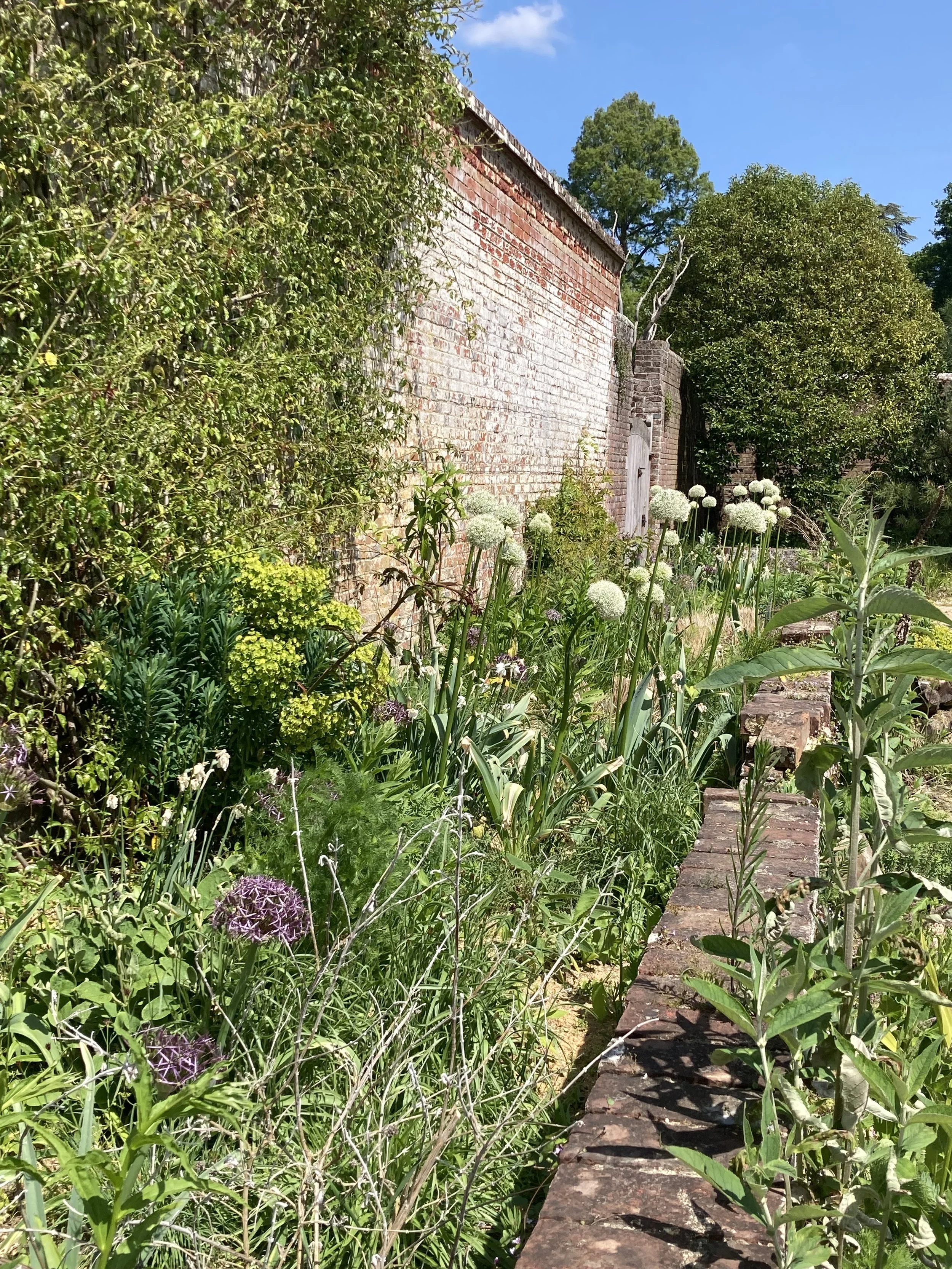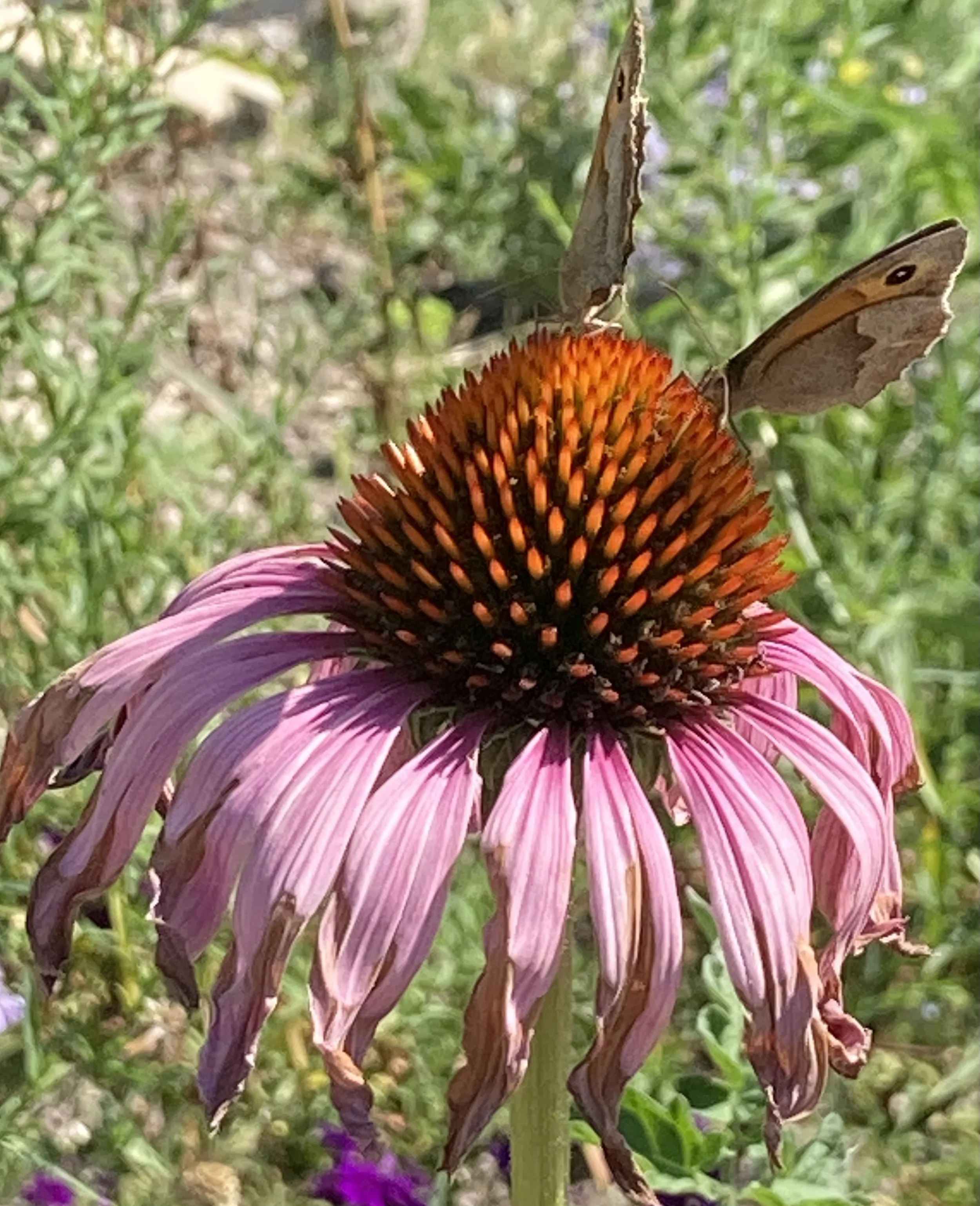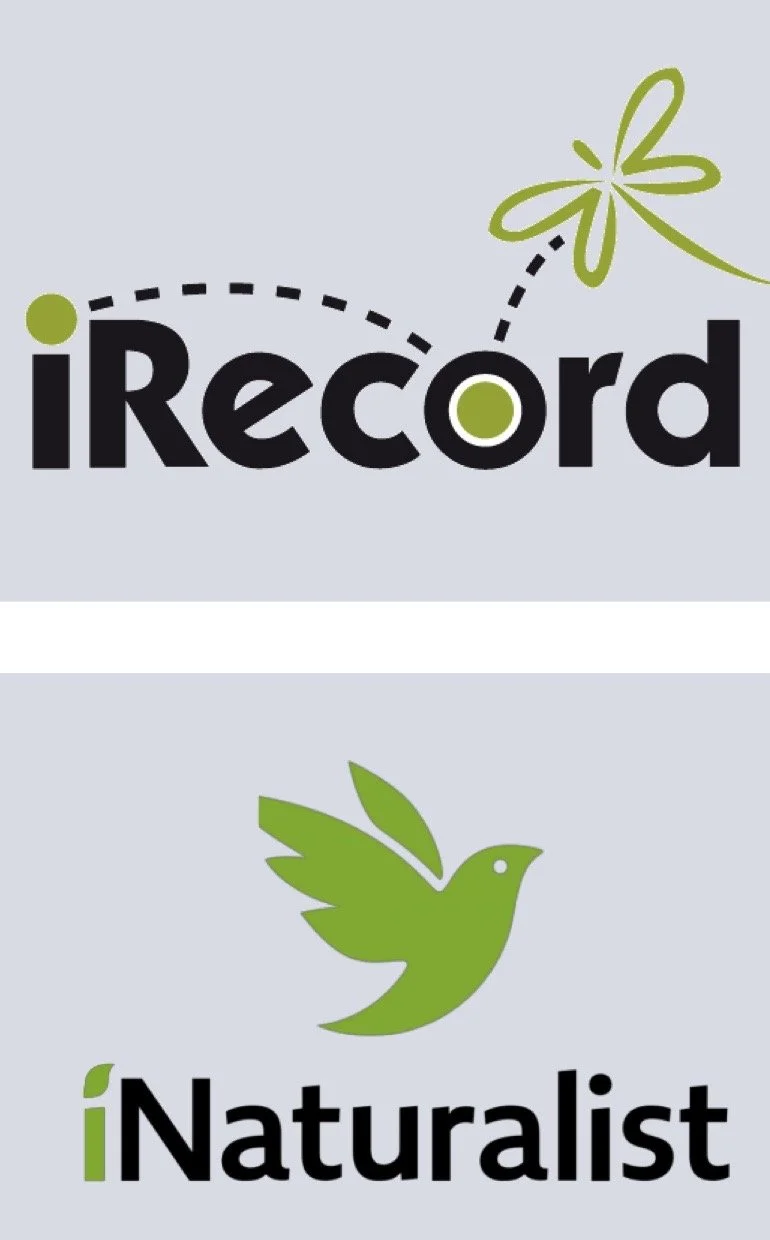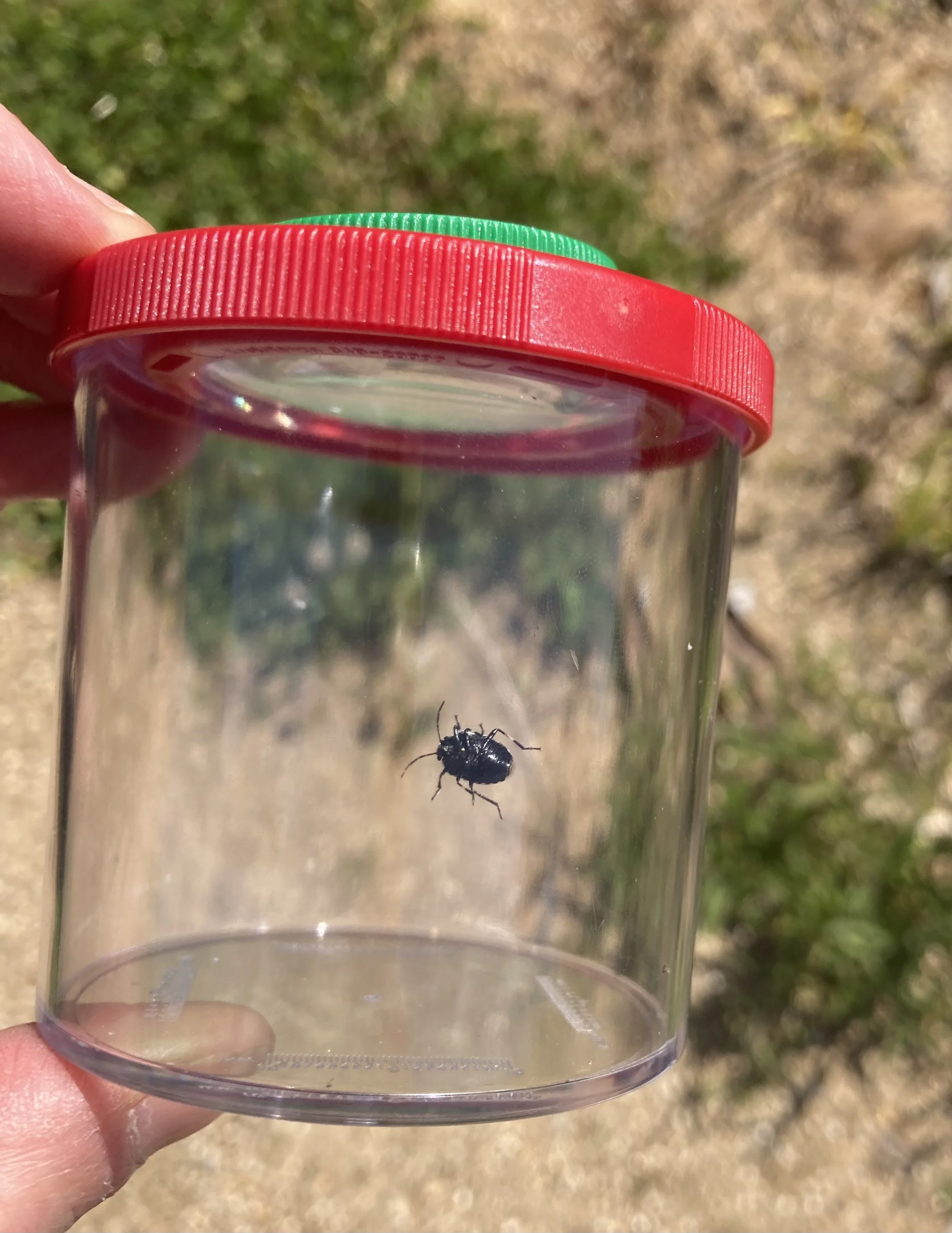Monitoring your Gardens Wildlife
Last month I spent a very interesting morning at Knepp’s rewilded Walled Garden in West Sussex, attending a workshop “Monitoring your Garden Wildlife” led by wildlife author and presenter, Kate Bradbury.
As we wondered around the walled garden and enjoyed the wonderful planting, Kate shared tips on how to identify and record garden wildlife.
We started off by looking at the previous night’s moth trap visitors and then focused on butterflies, bees, and other invertebrates.
We even found a baby Great Crested Newt!
Monitoring wildlife is something I’ve been doing for many years, both in my garden and on the South Downs. While I have focused on butterflies, pollinators and native wildflowers, its possible to monitor every possible type of wildlife. The UK has many National Recording Schemes focused on specific species groups, for example, dragonflies, bats and birds. There are also specific days, such as The Big Butterfly Count and The Big Garden Birdwatch, when wildlife organisations encourage us all to record a specific group of species on the same day.
Every area in the UK has a Local Environmental Record Centrewhich gathers and collates data from all available sources.
Thick-legged flower Beetle on a Geranium at Chalkhill
Why Monitor Wildlife
Wildlife monitoring schemes are invaluable, providing information to scientists enabling them to understand how the UK’s biodiversity is changing overtime. Sadly, of course, most of the species are trending down in their abundance. Decisions made about the environment, such as approval of planning applications for new developments, depend on accessible wildlife information.
Monitoring your gardens wildlife is also a great way to enjoy and appreciate the benefits of any nature-friendly gardening practices you’ve been doing.
Two Meadow Brown butterflies recorded at Chalkhill
Smartphone Apps mean that wildlife monitoring has never been easier. They identify what species you have seen and in many cases submit your sighting to the national database. The two main Apps are iRecord and iNaturalist.
iRecord is free and easy to use. It is a digital recording platform (you can use their website or their mobile app) where you can submit records for any organisms you see. The system uses a network of recorders to verify records and makes records available to national recording schemes and local environmental record centres. www.brc.ac.uk/irecord
iNaturalist is also free to download, and perhaps even easier if you are a beginner. It is an online system that collects wildlife observations, it suggests identification of organisms from a photo using artificial intelligence (AI). www.inaturalist.org
You can download both from your usual App Store on your smart phone.
Further information
If you’re interested in learning more about recording wildlife, either in your own garden or out and about, the Field Studies Council has an easy to follow guide all about Biological Recording
You don’t need any special equipment, though you might find a pot like this helpful!






